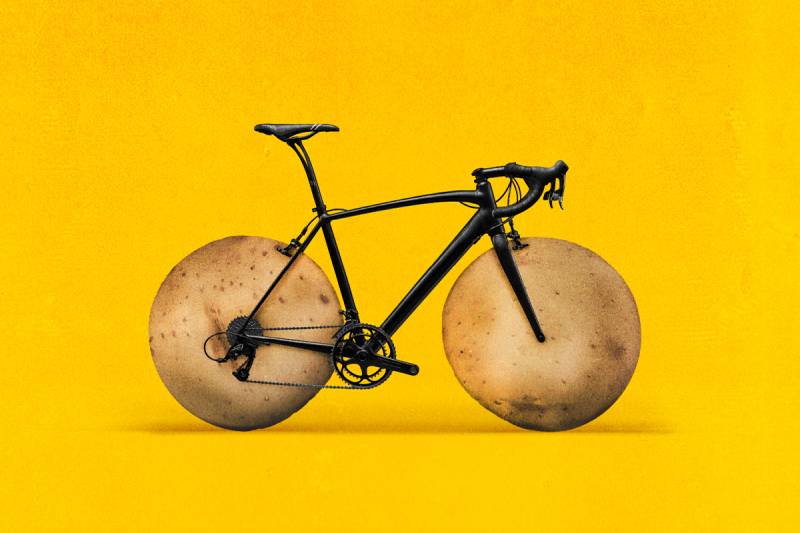There are many weight loss diets out there nowadays. For many, the marketing and few success stories are what drive their popularity. These success stories, however, are not solely due to the diet alone. Daily routine and health are variant; therefore a body's response to a particular diet may differ from person to person. As a result, it’s important to be cautious when choosing these weight loss “remedies” based on emphasized positives, without weighing the negatives.
Paleo
A classic “hunter-gatherer” type diet. It’s based on the theory that the western diet, including grains, dairy, and processed foods is linked to most modern diseases. This diet emphasizes whole foods, lean protein, vegetables, fruits, nuts, and seeds; but limits or removes processed foods, sugar, dairy, and grains

-
Pros
-
Help with common disease risk factors and high water retention
-
Very “clean” diet that reduces harm from processed foods
-
Studies show it helps with blood glucose levels, blood pressure, and short term weight loss.¹ ² *However, this may be due to a variety of reasons...nutrient dense lower calorie foods, lower water retention, feeling fuller and natural caloric reduction.*
-
Great for people with gluten or lactose intolerance
-
Cons
-
Limits common food options
-
Limits whole grains, legumes, and dairy which have healthy nutrients
-
Whole, natural foods may be costly
Takeaway: Multiple benefits including weight loss, lower disease risk, and metabolic health.³ Limited food options may reduce adherence. Not many associated risks with this diet, however the slightly reduced carbohydrate intake from grains may impact nutrient profile and performance.
Carb Cycling
Involves cycling carbohydrate intake according to activity levels. Light or aerobic activity, as well as off days, will reduce carbs drastically (along with calories). Moderate and high carb days will be on days with high activity and training.

-
Pros
-
Constant variation in diet to keep metabolism at its peak
-
Prevents muscle wasting
-
Increases fat utilization on low carb days
-
Using carbs for fuel only around activity, without having excessive, daily carb intake. *However, some studies suggest that carbs loading effect takes more time than just 24 hours*⁴
-
Food choices are very flexible
-
Cons
-
Requires awareness of macronutrient and caloric intake
-
No nutrient or food choice guidelines. Can have an effect on nutrition if not aware
Takeaway: Helps to maintain healthy hormonal balance and performance, while benefiting from a low carb diet regarding weight loss.⁵ ⁶ Great for healthy and experienced individuals looking to diet for performance or weight loss.
Low Carb
Limiting carbohydrates in your diet to extremely low levels, however the allowance varies. The purpose is to force your body to use more fat for fuel instead of carbs. When carbs are low, fatty acids are mobilized to the bloodstream and liver. Some are converted to ketones; which then can be used for energy.

Atkins - Allows you to eat as much protein and fat as you want, as long as you avoid carbs. The first phase limits carbs to around 20-25% of daily calories. There are 4 phases that introduce carbs slowly back into your diet as you reach your goal weight.
Ketogenic - Cut carbs to about 5 percent of daily intake. Around 75% will then come from fat and 20% from protein. Traditional Keto diets limit protein to 20%, however high protein ketogenic diets are rising in popularity to prevent muscle wasting and improve performance.
-
Pros
-
Reduce appetite
-
Eat all the fats and proteins you want
-
Only monitors macronutrient percentages
-
Shown to help with weight loss, diabetes, and epilepsy⁶ ⁷ ⁹ ¹⁰
-
Uses fat for fuel ¹¹
-
No dietary restrictions besides carbs
-
Cons
-
Initial dramatic weight loss can be deceiving due to reduced water retention without carbs ¹²
-
Low nutrient dense carbohydrate intake, supplementation for fiber, vitamins, and minerals
-
Impaired performance due to gastrointestinal issues ¹³
-
Risk of kidney stones and heart disease if not careful about fat choices
-
Rare, but a risk for nondiabetic ketoacidosis, which is potentially fatal
-
No focus on overall calories
-
High mortality rate shown in individuals reporting extreme lows of carbohydrates¹⁴
Two-year data suggests that weight loss is regained over time, possibly due metabolism drop and hormonal imbalances¹⁵
Takeaway - Safe for majority of individuals, but requires awareness of proper nutrient supplementation and healthy food choices. Shows improvement in weight loss and disease risk factors. Recommended for diabetics, epileptics, and obese individuals.¹⁶
Intermittent fasting
Similar to cycling carbs, but instead cycling eating patterns. There are set periods for eating and fasting. Multiple methods within this diet, but two of the most common are:
- 16/8 method - skip breakfast and designate 8 hours in the day for eating, while fasting the other 16 hours
- Eat-stop-eat method- Fasts for 24 hours once or twice per week

-
Pros
-
Unintentional restriction of calories and aids in weight loss¹⁷ ¹⁸
-
Helps to learn self control between hunger and appetite
-
Does not restrict food groups or macronutrients
-
Aids in weight loss
-
Reduces muscle wasting and prevents metabolism drop compared to traditional caloric restriction diets¹⁹ ²⁰ ²¹
-
Shown to improve human growth hormone levels, insulin sensitivity, and cellular repair²² ²³ ²⁴
-
Cons
-
Time restrictions may impact social eating and daily routine, reducing adherence
-
Hunger during fasts may reduce adherence
-
Not suggested for individuals sensitive to changes in blood sugar levels
Takeaway: Effective for weight loss and cellular health for healthy and nourished individuals. Not recommended for people sensitive to changes in blood sugar
Extreme Low-Fat
Less than 10% of calorie consumption comes from fat. In stricter diets, protein comes from mostly plant-based sources; limiting animal products due to higher fat content. Protein intake is fairly low, around 10-20%, leaving carbohydrate intake around 70-80% of diet.

-
Pros
-
Improvement in blood pressure, cholesterol, and inflammatory markers²⁷ ²⁸ ²⁹
-
Allows for as many carbohydrates as you want
-
Vitamin and mineral dense foods
-
Cons
-
Fat is important for cellular health, hormone production, and absorption of fat soluble vitamins
-
Hormonal imbalance may influence mood swings
-
High drop off rate in adherence due to low variety in food
-
High mortality rate shown among individuals reporting an extremely high carb diet¹⁴
Takeaway: Shown to improve weight loss and heart disease risk factors in obese individuals. Reportedly difficult to stick to and potentially detrimental to health in the long-term.
Final Thoughts
There are plenty of diets to choose from out there. While some are blown up more than others, it's important to have an understanding of how the diet will affect your body. If you have concerns about what is best for you, be sure to consult your physician or a dietician. This is especially true for adolescents and young adults who are still growing and are more prone to developing eating disorders due to the media's emphasis on the “ideal” body and rising cases of depression as a result of insecurities.³⁰
Despite which diet you choose, it is of utmost importance to understand how energy balance and overall calories influence weight loss, gain, and maintenance. A weight loss diet is meant to be temporary if it requires extreme deficits in calories or nutrients. Extreme deficits can have detrimental effects on the body in the long run. Make sure you monitor your caloric needs, even if the program does not call for it. As like most things, diets are recommended in moderation. Certain programs can be great for teaching consistency, “will-power”, and healthy eating. Making sure not to make strict dieting a habit is crucial to maintaining a healthy metabolism and optimizing overall performance.


